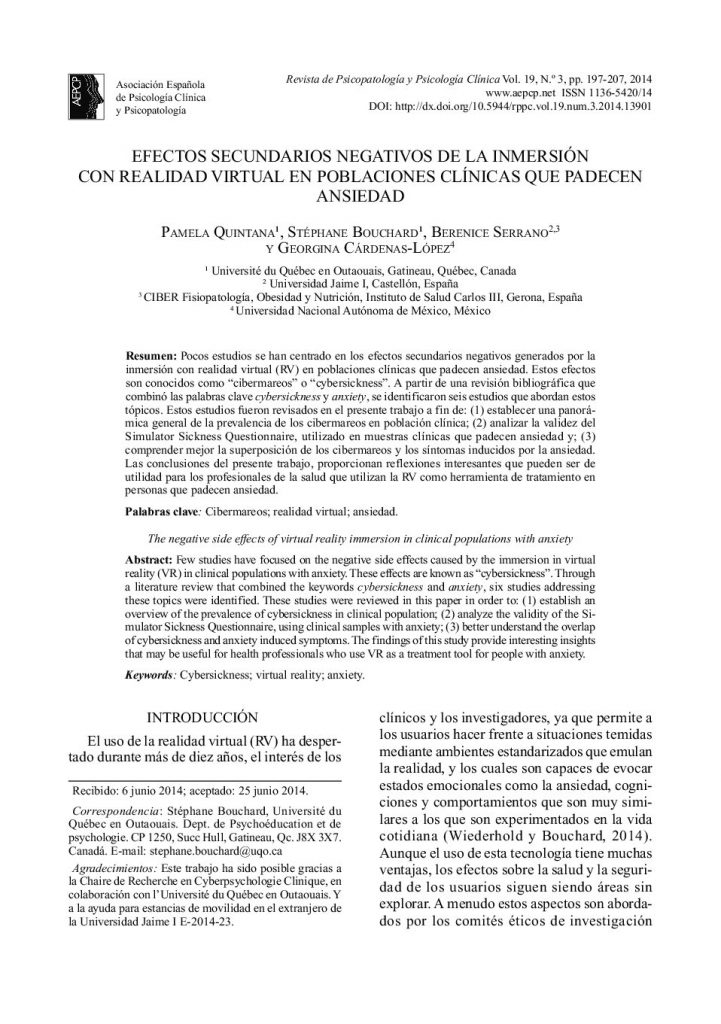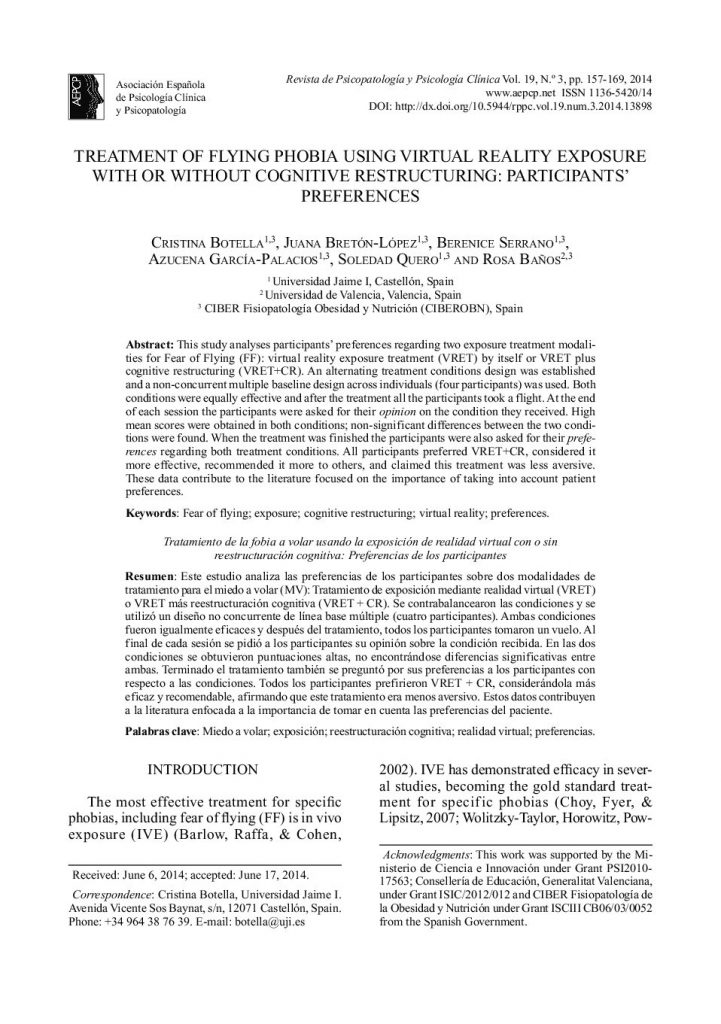Los efectos secundarios negativos de la inmersión con realidad virtual en poblaciones clínicas que padecen ansiedad.

- El uso de las tecnologías de la información y la comunicación en psicología clínica.
- Inducción de craving por comida mediante realidad virtual no inmersiva.
- Serious games for the treatment or prevention of depression: A systematic review.
- Psychological treatments for depression delivered via the internet and supported by a clinician: An update.
- Internet interventions for depressive disorders: An overview.
- Los efectos secundarios negativos de la inmersión con realidad virtual en poblaciones clínicas que padecen ansiedad.
- La validación transcultural de intervenciones clínicas basadas en evidencia para el tratamiento de trastornos de ansiedad.
- El uso de una red social segura para el estudio de la ansiedad en la adolescencia.
- Treatment of flying phobia using virtual reality exposure with or without cognitive restructuring: participants’ preferences.
- Smartphone for self-management of psychological stress: a preliminary evaluation of positive technology app.
- Congresos y reuniones científicas 2014.
Few studies have focused on the negative side effects caused by the immersion in virtual reality (VR) in clinical populations with anxiety. These effects are known as “cybersickness”. Through a literature review that combined the keywords cybersickness and anxiety, six studies addressing these topics were identified. These studies were reviewed in this paper in order to: (1) establish an overview of the prevalence of cybersickness in clinical population; (2) analyze the validity of the Simulator Sickness Questionnaire, using clinical samples with anxiety; (3) better understand the overlap of cybersickness and anxiety induced symptoms. The findings of this study provide interesting insights that may be useful for health professionals who use VR as a treatment tool for people with anxiety.
Pocos estudios se han centrado en los efectos secundarios negativos generados por la inmersión con realidad virtual (RV) en poblaciones clínicas que padecen ansiedad. Estos efectos son conocidos como “cibermareos” o “cybersickness”. A partir de una revisión bibliográfica que combinó las palabras clave cybersickness y anxiety, se identificaron seis estudios que abordan estos tópicos. Estos estudios fueron revisados en el presente trabajo a fin de: (1) establecer una panorámica general de la prevalencia de los cibermareos en población clínica; (2) analizar la validez del Simulator Sickness Questionnaire, utilizado en muestras clínicas que padecen ansiedad y; (3) comprender mejor la superposición de los cibermareos y los síntomas inducidos por la ansiedad. Las conclusiones del presente trabajo, proporcionan reflexiones interesantes que pueden ser de utilidad para los profesionales de la salud que utilizan la RV como herramienta de tratamiento en personas que padecen ansiedad.




